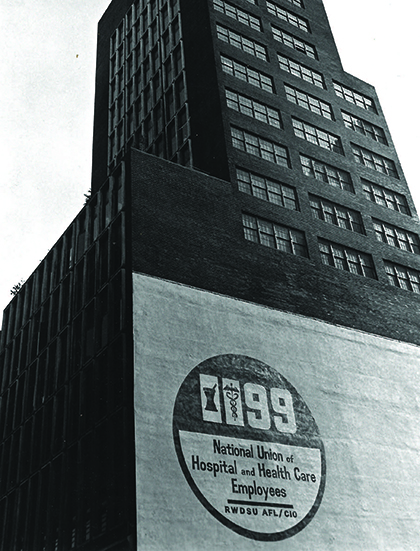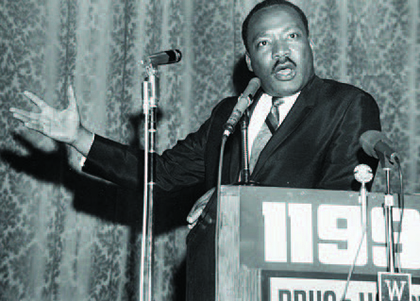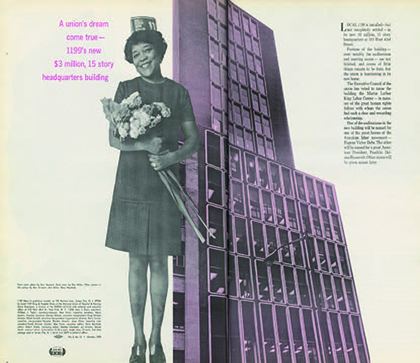Saying Goodbye TO THE HOUSE THAT CAREGIVERS BUILT
April 22, 2020
1199 is moving from its famed Manhattan headquarters on West 43rd St., but the building’s proud history lives on.

While the Union is leaving behind its historic home, it’s hardly leaving behind its history. Since opening in the fall of 1970, the MLK Labor Center has been a virtual who’s who of the progressive movement, welcoming scores of renowned union leaders, local and world leaders, elected officials, artists, and activists of countless movements.
The MLK Center was a far cry from the Union’s early headquarters— cramped offices above a Third Avenue butcher store in Manhattan. 1199 leaders had for many years dreamed of having an all-purpose headquarters that would provide functional facilities for staff as well as serve the social, cultural, educational and recreational needs of members. And at its opening, 1199 leaders stressed that 310 West 43rd Street would be “a place where all elements of the Union can fuse their varied cultures in a common effort to build a better society, a better community and a better New York.” Built for a cost of around $3 million, the modern, roomy, 15-story structure, on the fringes of Times Square was named for the Union’s patron saint and reflected the Union’s rapid growth, dramatic advances, and vision for communicating the realities of working life.

Other speakers at the opening included Mayor John Lindsay; Rep. Herman Badillo of the Bronx, the first Puerto Rican elected to Congress; and Manhattan Rep. Bella Abzug, a pioneer in the women’s and political movements.
A bronze bust of Dr. King by Dr. Alan R. Bleich was part of the original design (and still adorns the building’s lobby). The building featured two auditoriums for member gatherings; one named for President Franklin Delano Roosevelt and another honoring socialist labor leader Eugene V. Debs. Meeting rooms on the second floor carried the names of Walter Reuther of the United Auto Workers; abolitionist Harriet Tubman; scientist and humanist Albert Einstein; Puerto Rican educator, philosopher, writer and lawyer Eugenio Maria de Hostos; and poet Emma Lazarus. Over the years, the names of the rooms have changed to honor other late heroes.

A stunning mosaic mural by the progressive artist Anton Refregier dominated the building’s entrance.

Over the years, the gallery has exhibited the work of some of the nation’s most celebrated artists.
They include Jacob Lawrence, Milton Glaser, Sue Coe, Alice Neel, Ralph Fasanella, Judy Chicago, Luis Jimenez Jr. Some of the exhibits have even toured the world.
“A good union doesn’t have to be dull,” was an oft-repeated slogan of Moe Foner, 1199’s genius public relations director and Bread and Roses founder. Foner also said, “laughing together helps to build the Union, forging unity and solidarity among a diverse membership.”
The King Center has been a powerful vehicle and brilliant symbol of that unity and solidarity.
1199 Magazine | March / April 2020

